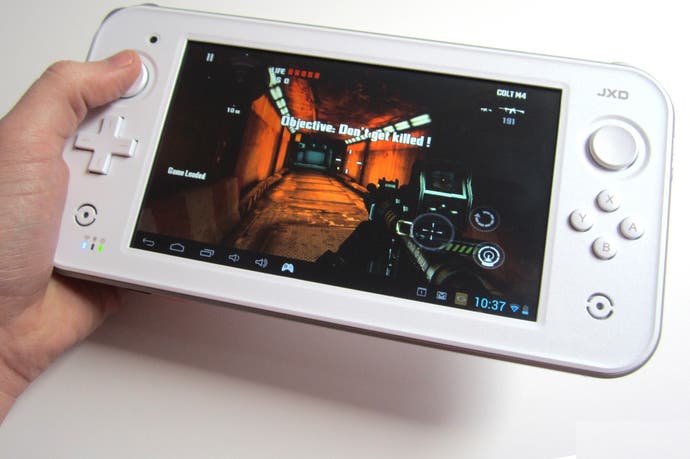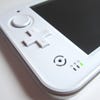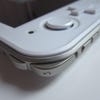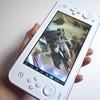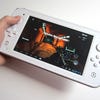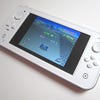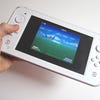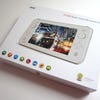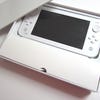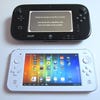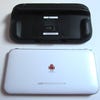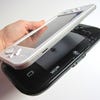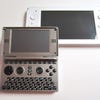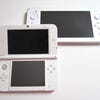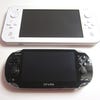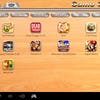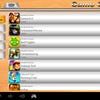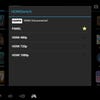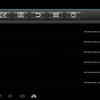Wii U GamePad Android knock-off review
Digital Foundry says hello to the Android JXD S7300, the latest clone from the Far East.
Update: We have updated this article to more firmly state that while the 'home' of cloned hardware is undoubtedly China and the Far East, the often poor build quality and standards are not a fair reflection on the outputs of a region that produces some of the most technologically advanced hardware in the business.
Whenever one of the big console manufacturers comes up with a new design idea, you can bet your bottom dollar that a Chinese clone will appear shortly afterwards. Just as the PlayStation Vita was copied by the catastrophically poor Droid X360, the Nintendo Wii U GamePad has been shamelessly ripped off by Shenzhen-based JXD. The lack of rigorously enforced protection of intellectual property rights in China results in the creation of these devices from smaller, less scrupulous companies where build quality is often questionable, standing a world apart from the more respected brands that are officially exported worldwide.
In the case of the device we're looking at here, the clone in question is the S7300 Gamepad 2, an Android 4.1-powered 7-inch tablet device running an ARM-based Amlogic 1.5GHz chipset, packed with 8GB of internal storage and - most importantly - armed with an array of dedicated gaming controls which make the product look like the Wii U GamePad's slightly thinner cousin.
JXD isn't the first company to hit upon the idea of physical gaming inputs on an Android device, of course - Sony Ericsson's Xperia Play was the early trend-setter, and since then we've also seen the disappointing Archos GamePad and the aforementioned Droid X360, while JXD itself seems to have an entire range of its own Vita/PSP knock-offs. The undesirable reputation of this more 'underground' offshoot of the Chinese hardware biz may lead you to assume the worst, but amazingly the S7300 is a long way off being a complete disaster - although it does comes with a few unfortunate shortcomings which sully the experience ever so slightly.
From the front, the S7300 certainly looks awfully similar to Nintendo's revolutionary controller. The arrangement of the buttons is practically identical, but the larger 7-inch screen (which is capacitive rather than resistive) is a welcome change. Around the edge of the unit there's a faux-metal plastic strip, calling to mind the white iPhone 4. The back of the device is practically flat, and eschews the ergonomic bulges present on the Wii U GamePad - something which ensures that the S7300 remains as portable as possible. Overall, build quality is pleasing - everything is fashioned out of plastic as you might expect, but aside from a little movement on the front of the tablet, nothing feels as if it's going to fall apart.
Given the dismal failure that was the Archos GamePad digital controller, we were almost afraid to try the d-pad on the S7300. Amazingly, it's one of the best we've experienced in a long time - it's clearly influenced by the pad on the Wii U controller (which in turn is based on the one seen on the Wii Remote) but it's slightly larger. It has a pleasant spongy quality, and doesn't sit too far down in the tablet's casing, making it easy to hit diagonals. The dual slider nubs are equally satisfying to use, and become indispensable in twin-stick FPS titles. The four face buttons are firm and responsive, as are the shoulder triggers - although when using the d-pad, they're quite awkward to reach during play unless you have exceptionally large hands.
The S7300's controls aren't quite perfect, though, as there's an issue with the d-pad which leads to phantom button-presses. When you perform a down-to-right quarter-circle motion - like the one required to execute Ryu's fireball in Street Fighter 2 - the device registers a constant left press. We were able to consistently replicate this bug in several different apps, and have confirmed with another S7300 owner that it's a common fault. Whether or not this can (or even will) be rectified via a firmware update remains to be seen; it doesn't render the device totally unusable, but it's certainly an annoyance which impacts your enjoyment - especially if you plan on playing 2D fighters via emulation.
The S7300's 7-inch screen is another surprise, albeit a pleasant one. The 1024x600 pixel resolution offers a pixel density of 169dpi and makes for quite a narrow image. However, the quality of the panel is better than we were expecting, especially after the terrible screen on the Archos GamePad. Viewing angles are still a little off - a common complaint with cheap screens - but the brightness and colour are decent. Touchscreen responsiveness is also above-average, although we did notice that some touches didn't always register properly - usually when the device was performing other processor-intensive activities.
"While the Nintendo influence is obvious, the clone goes for a larger 7-inch capacitive display and is significantly thinner than its inspiration."
With Android 4.1 onboard the S7300 isn't quite at the cutting edge, but it's pretty damn close. Performance is refreshingly swift and isn't plagued by the pauses and crashes which so badly crippled the Archos GamePad. Access to the Google Play store means you can download thousands of apps and games, although compatibility is depressingly spotty - many games won't install and are listed as not being available for the tablet. Some apps - such as our favourite suite of Android emulators - installed fine, but crashed out upon loading, requiring a bespoke fix from the developer to get things working. It's far from certain that other game developers will support the device likewise.
While we usually try to avoid focusing too much attention on it, emulation is clearly a major element of the S7300's appeal. The device comes preloaded with several emulators as well as access to JXD's legally dubious "Game X" service. This app allows you to download various Android titles and also has entries for SNES, Mega Drive and PlayStation titles - although at the time of writing we weren't able to download any ROMs for these platforms using the app itself.
However, the S7300 does come with several games pre-installed, including Sega's Mega Drive RPG Shining in the Darkness and Nintendo's iconic Super Mario 64. The quality of the bundled emulators is patchy to say the least; performance is all over the place, with N64 games functioning better than less demanding 16-bit titles, but only marginally so. The power is clearly there - as we were able to prove by downloading alternative emulators - but it's clear that the options offered out of the box are lacking.
"The bundled apps are mostly a waste of time, but Google Play is supported. It's just a shame that so many games aren't supported, even though the hardware is perfectly capable of running them."
Like the Archos GamePad, the S7300 offers the ability to map the physical controls to on-screen buttons in certain games. Although the app included for this purpose is less erratic than Archos' offering, it doesn't offer quite the same degree of functionality and it's quite hard to accurately map controls in some games. There's the chance that this could improve with further updates; in the meantime, there are always paid-for alternatives available on the Google Play store.
When it comes to running pure Android titles, the S7300's Mali 400 graphics processor delivers reasonable results. Naturally, the tablet is left in the dust by quad-core rivals such as the Nexus 7, but we were able to play intense 3D games without too much trouble. Zombie-blasting FPS Dead Trigger comes pre-installed, and is an excellent advertisement for the device's physical controls. While it lacks the embellishments present when running the game on Tegra 3 hardware, it still looks the part, and moves smoothly. Running the Epic Citadel benchmark, the S7300 returned an average FPS of 33.6 on the high performance setting and 33.0 on the high quality setting - not too shabby, but well below the figures achieved by quad-core devices like the Nexus 4, which essentially runs at 60FPS (held back by the 60Hz v-sync), only dropping frames in scene switches.
There's 8GB of onboard flash storage inside the S7300 - of which the end user has access to 5.37GB - but this can be added to by using cheap-and-cheerful MicroSD cards. Battery life is comparable with other 7-inch Android tablets, but like the 3DS and PlayStation Vita, it's highly likely that you'll need to get into the habit of charging every few days if you plan on using this as a serious gaming platform. The S7300 comes with a two-pin wall charger, but thankfully a standard MicroUSB cable works well enough for topping up battery power.
"Benchmarks for the device are reasonably competitive though 3D rendering power is off-pace compared to other Android tablets."
| Nexus 7 | Galaxy Note 2 | Kindle Fire HD | JXD S7300 | |
|---|---|---|---|---|
| Quadrant Standard | 3699 | 5765 | 2177 | 3973 |
| AnTuTu Benchmark | 12726 | 13305 | 6276 | 8081 |
| Vellamo | 1746 | 2421 | 1221 | 1196 |
| GLBenchmark 2.5.1 Egypt HD On-Screen/Device Native Res | 20.7FPS | 18FPS | 9FPS | 10FPS |
| GLBenchmark 2.5.1 Egypt HD Off-Screen/1080p | 13.1FPS | 17FPS | 6FPS | 9FPS |
JXD S7300 Gamepad 2: the Digital Foundry verdict
Given the poor track record of Android tablets with physical controls and the legally dubious origin of the S7300, we have to admit we didn't exactly have high expectations when we opened up the box. However, from a design standpoint, JXD has nailed it with this device; it's comfortable to use, the physical controls are generally excellent and the screen quality is surprisingly good. It also has a fairly capable chipset inside it, expandable memory and a decent battery.
It's a real shame then that issues exist which curtail the S7300's usefulness. The d-pad bug makes it hard to fully enjoy retro classics on the tablet, although there is hope that this problem can be remedied via software. Other issues - such as incompatibility with certain apps and games and the poor standard of the emulators included with the device - aren't insurmountable, especially when you consider the sheer volume of content available on the Google Play store.
When you take into account the price point of around $160 (approximately £100) it's a little easier to live with the S7300's shortcomings - especially when there's the chance that these problems could be solved in the not-too-distant future. JXD has arguably gotten the hard work out of the way - creating a decent physical interface seems to be beyond many other Android manufacturers - and if the company can support the device with firmware upgrades, this could become an essential, carry-everywhere item for mobile gamers.
That's a pretty big if, however - like so many 'no name' Chinese companies, JXD has a history of relentlessly releasing new products and allowing past ones to fall by the wayside with little software support. The S7300 is most definitely the best tablet with gaming controls we've seen so far - although given the dire standard of the competition, that isn't exactly saying a great deal.
